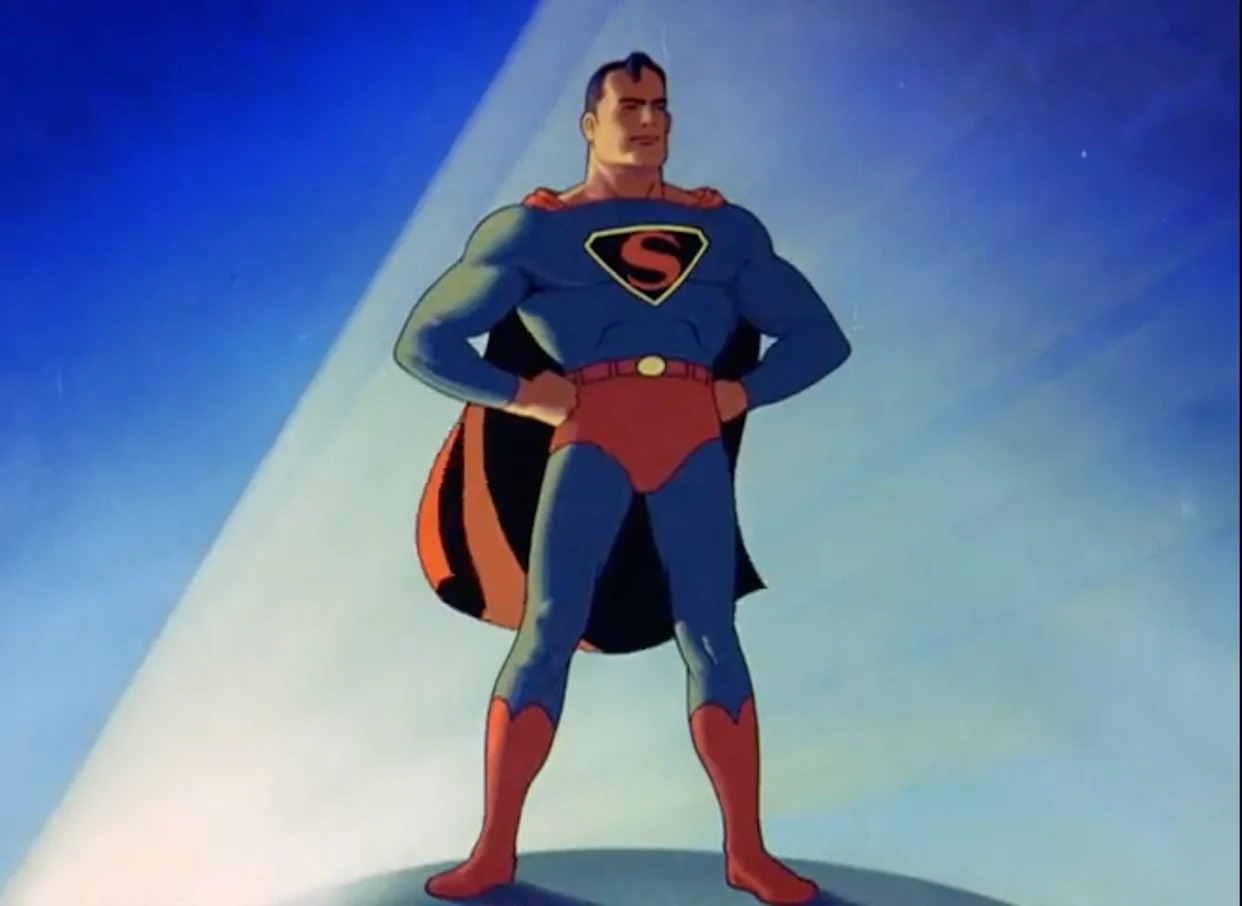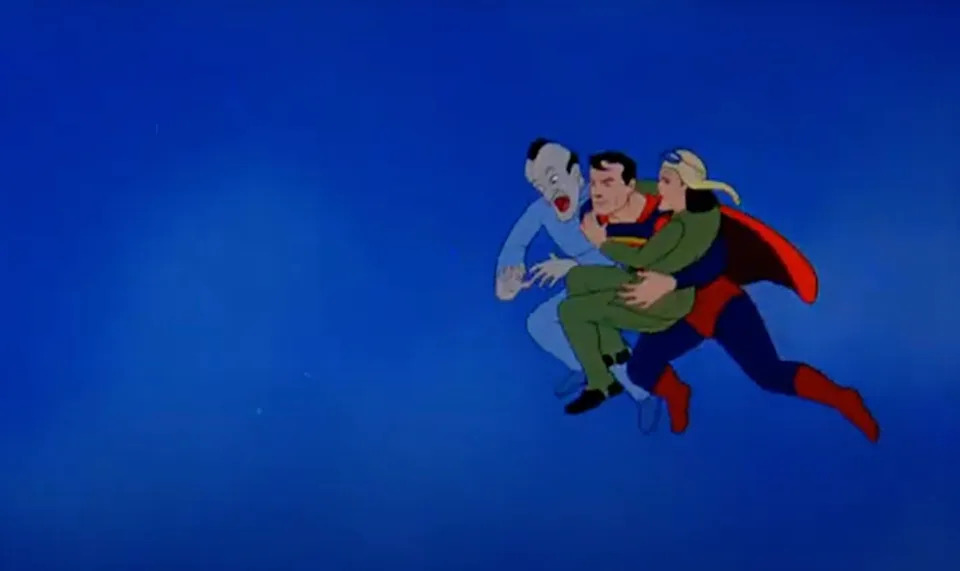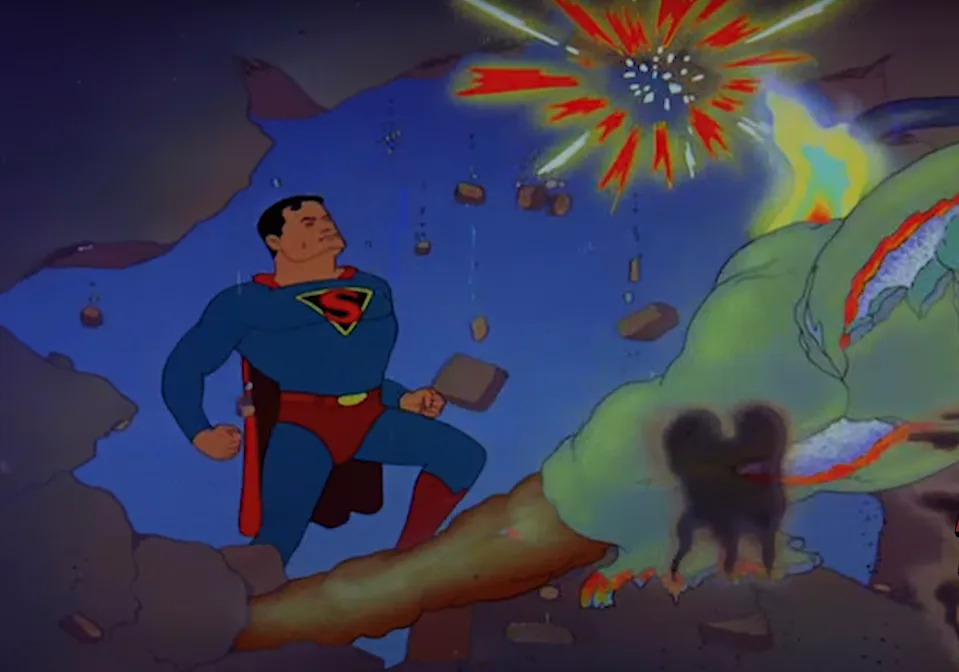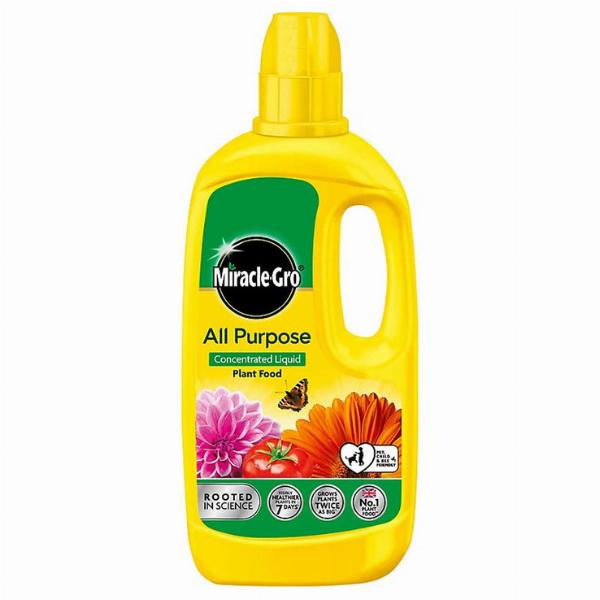The ‘Superman’ Oscar nomination you (probably) didn’t know existed

James Gunn’s Superman is off to a stunning start, at the box office and with reviewers. Superman adaptations have long resonated commercially, critically and with the Motion Picture Academy, with Richard Donner’s excellent 1978 Superman, starring Christopher Reeve, paving the way for lauded comic adaptations like The Dark Knight and Black Panther. Donner's Superman was nominated for three Oscars, including for John Williams' epic score, and received a Special Achievement Academy Award for its visual effects.
More from Gold Derby
'Can it get any weirder?' Live Aid's last-minute headliner recalls offer to play for 2 billion people
The Supermen that never were: Here are 5 scrapped Man of Steel movies ranked by their Oscar potential
AdvertisementAdvertisement#«R14e4kr8lb2m7nfddbH1» iframe AdvertisementAdvertisement#«R24e4kr8lb2m7nfddbH1» iframeWhile live-action Superman adaptations date back to the 1948 serial and the better-known 1950s TV version The Adventures of Superman starring George Reeves, the Man of Steel’s first Oscar-worthy appearance came way back in 1941 and was actually in cartoon form, via the 1941 Superman from animation pioneer Max Fleischer.
<img src="https://www.goldderby.com/wp-content/uploads/2025/07/Superman-David.jpeg" alt="David Corenswet as the Man of Steel in <i>SupermanThe character of Superman first appeared in Action Comics No. 1 (1938), and his initial big-screen adaptation proceeded apace. Paramount Pictures acquired the highly coveted film rights to Superman in 1940, beating out Republic Pictures, which consequently grabbed the rights to adapt Captain Marvel (now DC Comics’ Shazam) in serial form. Paramount pitched the Superman series to Fleischer, whose company was partially owned by the studio, and the rest is comic book movie history.
Max and his brother Dave founded Fleischer Studios in 1929. With Max serving as the lead animator and Dave as producer-director, the brothers found initial success in their adaptations of the comic strip Popeye the Sailor Man, with the 1936 animated short "Popeye the Sailor Meets Sindbad the Sailor," which secured the Fleischers' first Academy Award nomination.
AdvertisementAdvertisement#«R19e4kr8lb2m7nfddbH1» iframe AdvertisementAdvertisement#«R29e4kr8lb2m7nfddbH1» iframeWith an assist from Superman cocreator Joe Schuster, who helped the animators nail the character design, the brothers and their crew began work on their superhero reels, hoping to meet Paramount's stated goal of having the first short in theaters by Christmas 1940. But production took longer than expected, and the first Superman installment, “The Mad Scientist,” didn't premiere until September 1941. It was the first of 17 shorts in the series.
Superman begins with the titular (but unnamed) “Mad Scientist” sending a threatening note to Clark Kent’s editor, Perry White. The letter claims the antagonist will use his newest deadly invention, the Electrothanasia-Ray, promising that “total destruction will come to those who laughed at me and failed to heed my warnings.” Lois Lane has a lead and flies off to the villain’s lair — quickly finding herself captured by the scientist just as he readies his weapon. Superman intervenes to save day, thwarting the nefarious plan and rescuing Lois.
 Superman stops the mad scientist and saves Lois in the first Fleischer short
Superman stops the mad scientist and saves Lois in the first Fleischer shortThe Fleischer Superman series marked an early high point for superhero adaptations, and Paramount knew it. The studio even commissioned theatrical trailers to promote the animated serial, a novel maneuver for an 11-minute cartoon.
Midway through production, the Fleischer brothers had a falling out, prompting Paramount to dissolve Fleischer Studios after only nine installments of Superman were completed. With the brothers no longer involved, the company was reorganized as Famous Studios, which cranked out eight additional episodes, with a new voice cast and darker storylines, and a notable decline in quality. The popularity of the Kryptonian cartoons soon waned. The final short, "Secret Agent," was released July 30, 1943. The rights eventually reverted back to National Comics (now DC Comics), which failed to renew their copyrights, resulting in the serials falling into the public domain.
In addition to being the first adaptation of the Man of Steel and paving the way for the superhero adaptations to follow, it also introduced the humorous plot device of Clark breaking the fourth wall, which gradually made its way into the comics. The series as a whole featured a number of classic Superman hallmarks, from mad scientists and giant robots to patriotic repudiations of Nazis.
 Fleischer's cartoons featured dazzling animation that would have a lasting influence on future superhero adaptations
Fleischer's cartoons featured dazzling animation that would have a lasting influence on future superhero adaptationsAt the 14th Academy Awards in 1942, Superman was nominated for Best Short Subject, Cartoons, becoming the first superhero film nominated for an Academy Award. The short ultimately lost to Walt Disney’s Lend a Paw, the 115th short in Disney’s Mickey Mouse series and the only to win an Oscar.
AdvertisementAdvertisement#«R1je4kr8lb2m7nfddbH1» iframe AdvertisementAdvertisement#«R2je4kr8lb2m7nfddbH1» iframeSuperman left a large impact on both animation history and subsequent comic book adaptations. 1,000 animation historians ranked the 1941 outing at No. 33 in the book The 50 Greatest Cartoons. They praised its pulp magazine visuals and tight plotting, faithfully reproducing the feel of reading a comic book. Fifty years later, the look of the Fleischer series directly influenced the visual design of the Emmy-winning Batman: The Animated Series (1992-95).
And Gunn himself pays homage to that old-school Kryptonian: the very first image in the filmmaker's new Superman is a snippet of the Fleischer hero, serving as both a connection to the past and a symbolic passing of the Man of Steel torch.
Best of Gold Derby
Everything to know about 'The Batman 2': Returning cast, script finalized
Tom Cruise movies: 17 greatest films ranked worst to best
'It was wonderful to be on that ride': Christian Slater talks his beloved roles, from cult classics (‘Heathers,’ ‘True Romance’) to TV hits (‘Mr. Robot,’ ‘Dexter: Original Sin’)
Sign up for Gold Derby's Newsletter. For the latest news, follow us on Facebook, Twitter, and Instagram.
Click here to read the full article.



![North America Proppant Market Insights- Strategies for Success in a Competitive Landscape [2028]](https://noticiasdecostarica.com/zb_users/upload/2025/07/20250716104858175263413816724.jpg)









